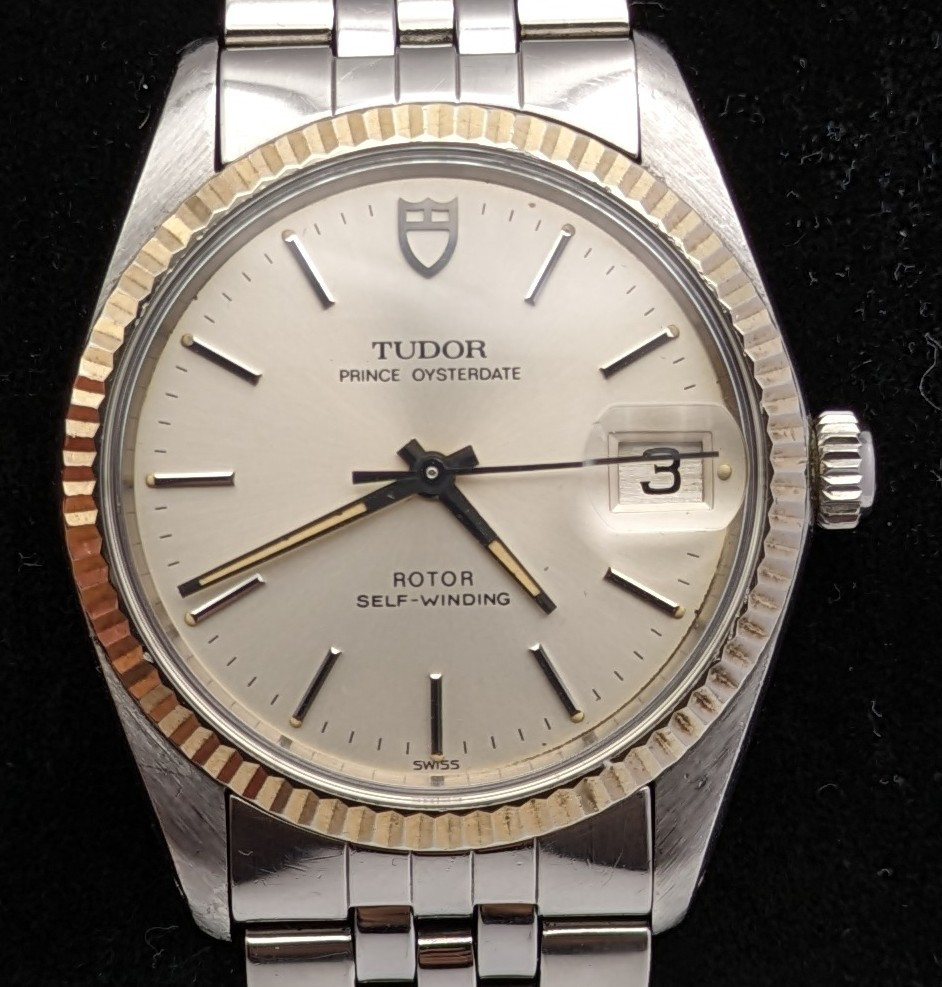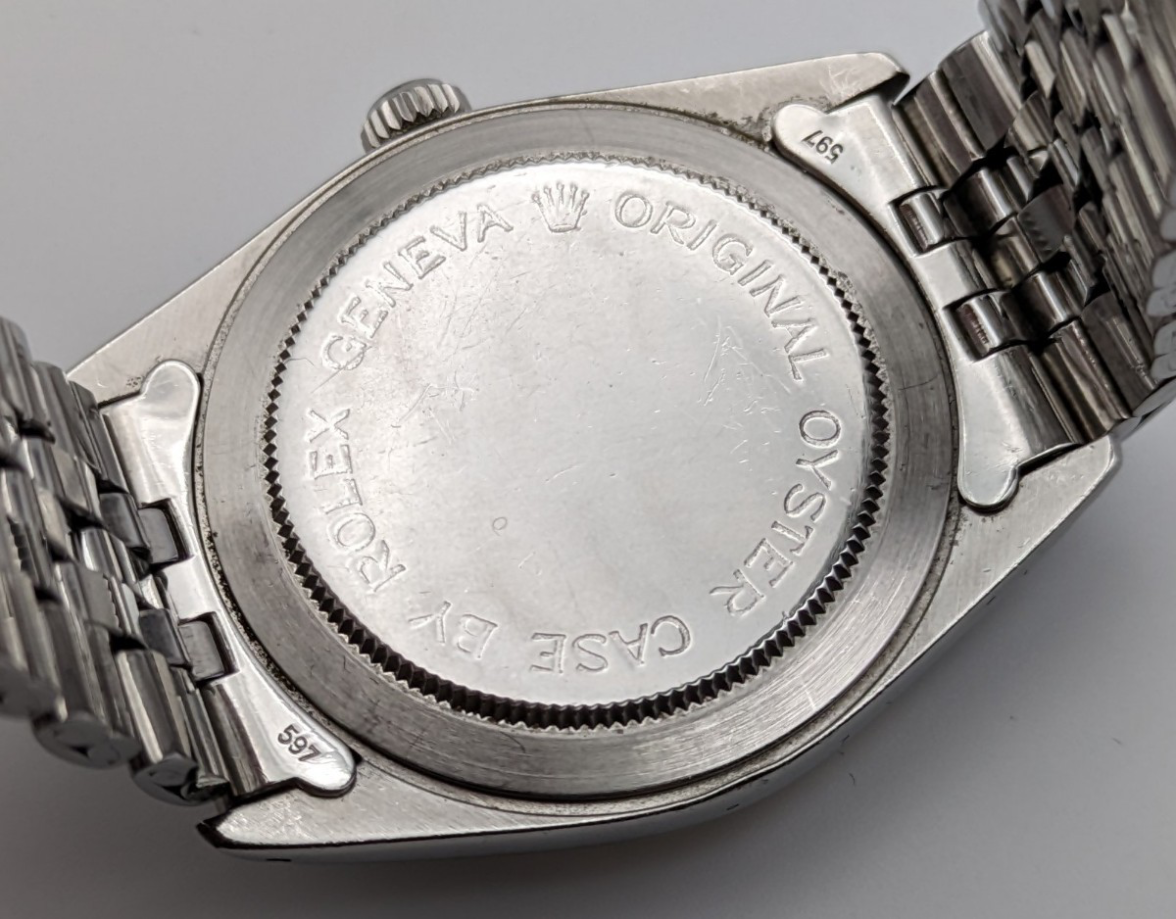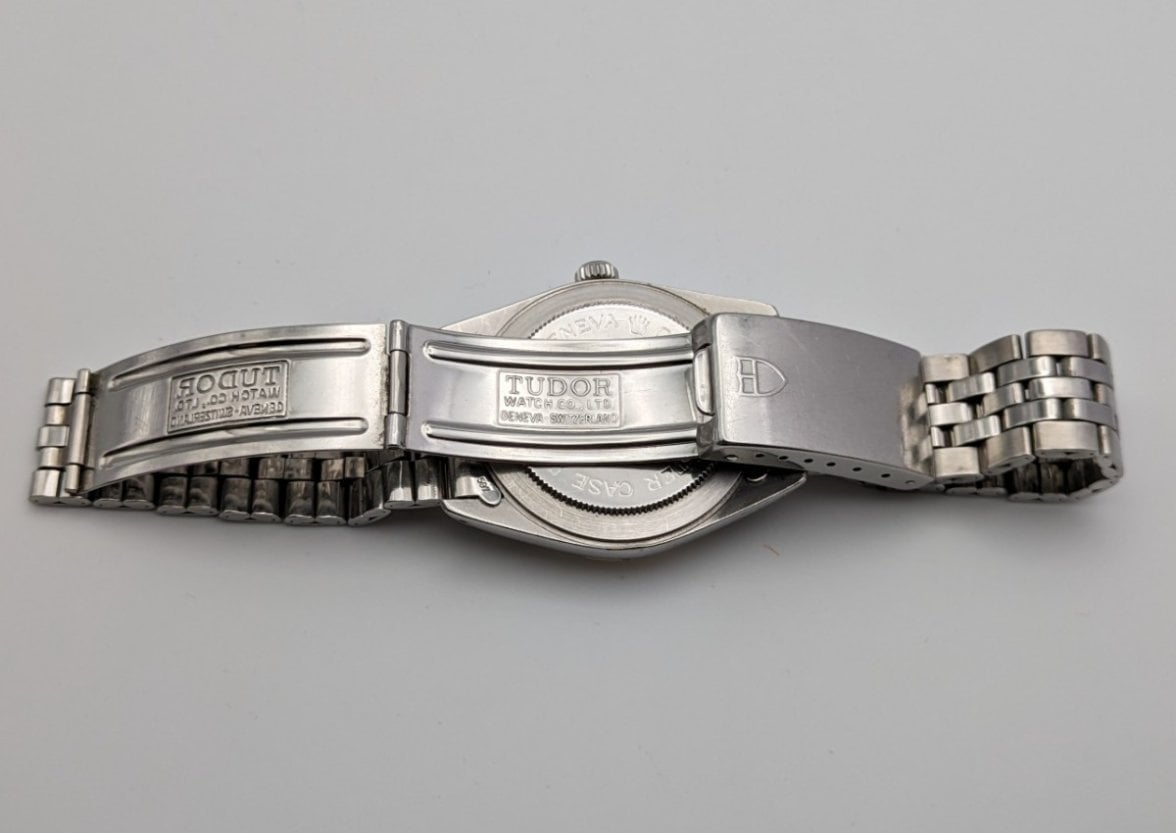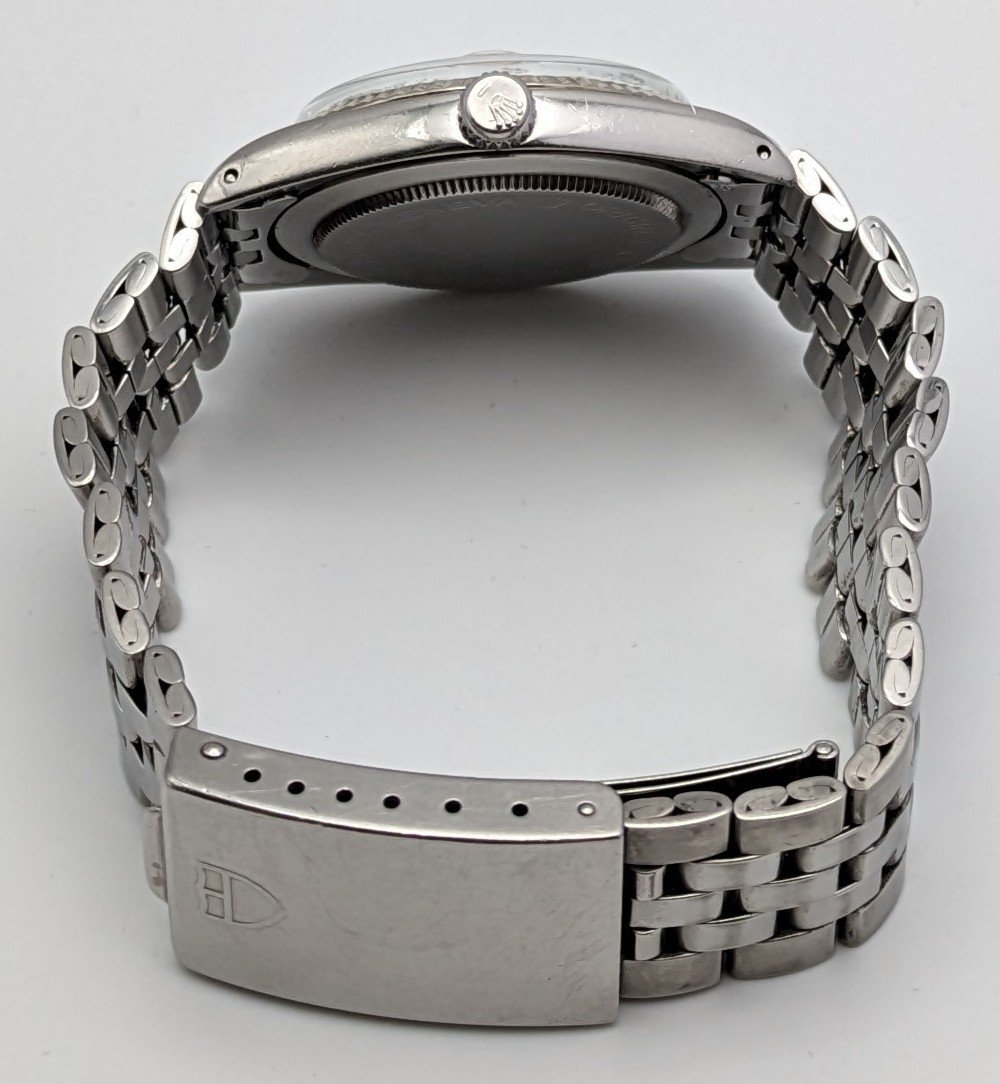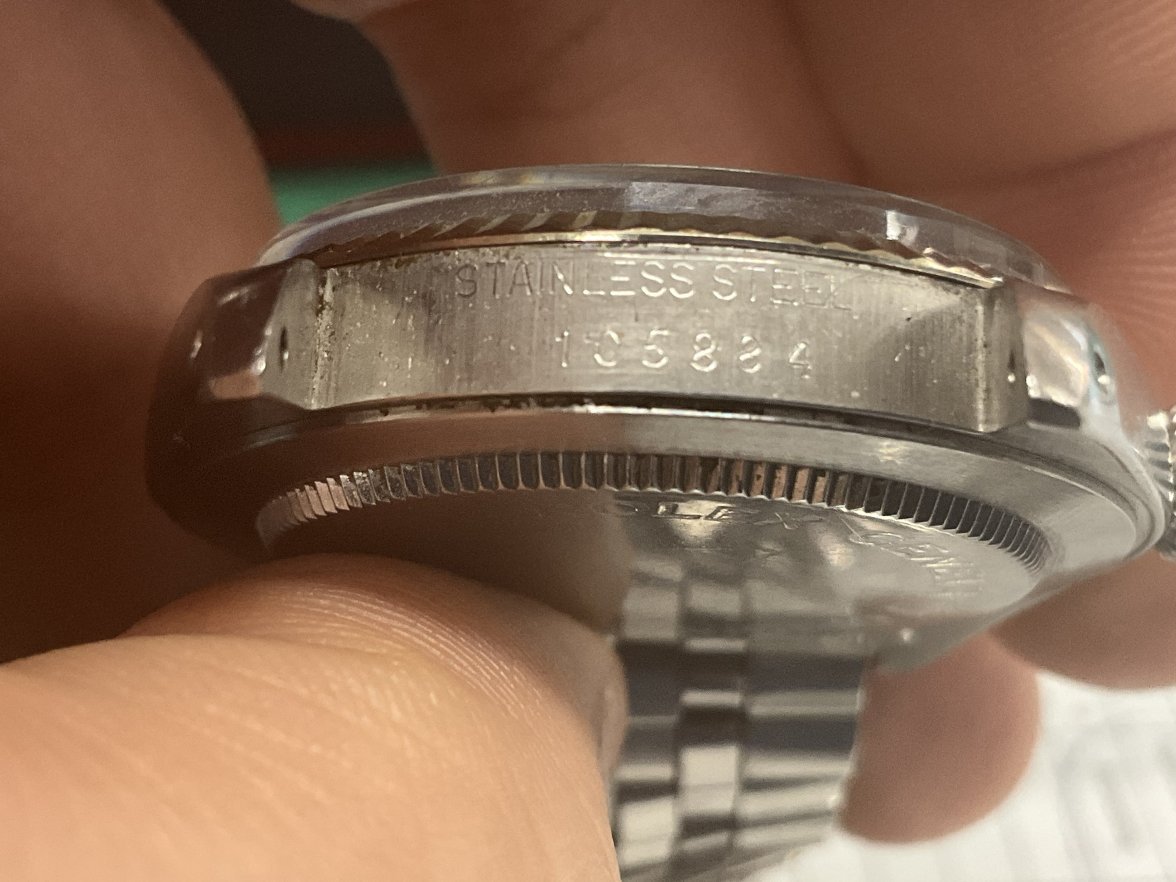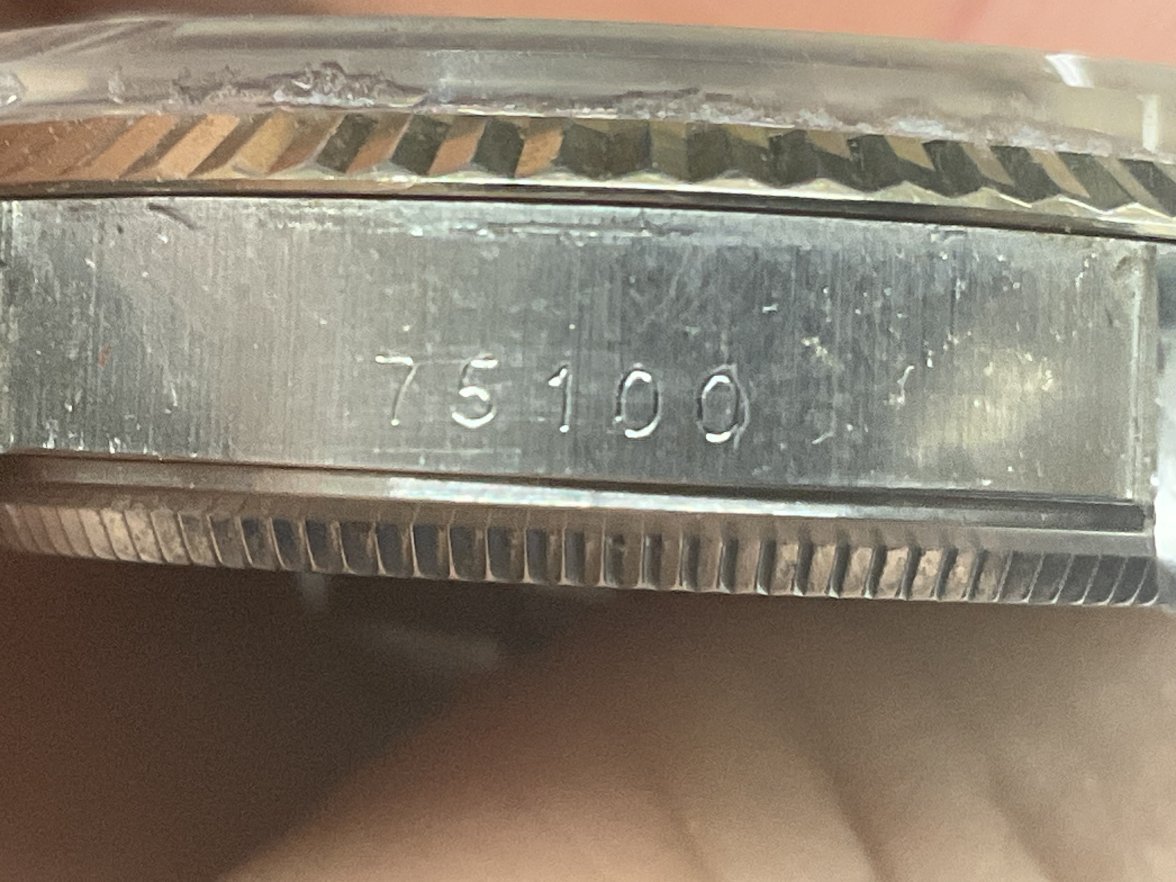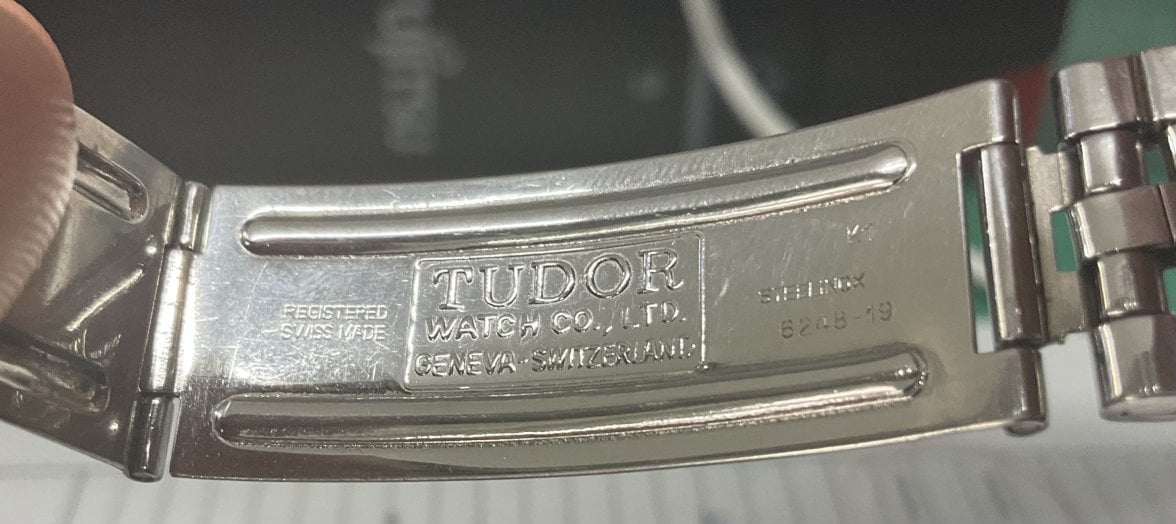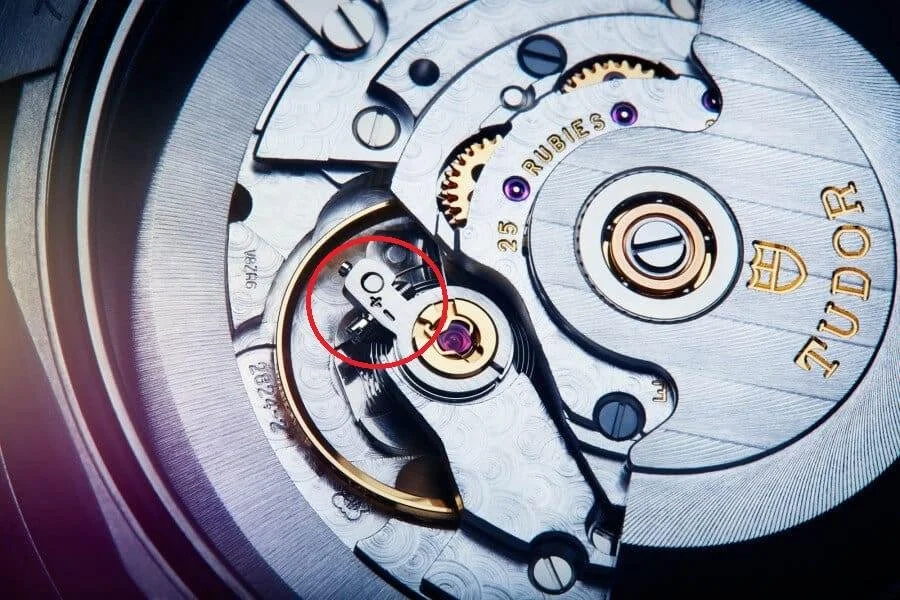Manlodan
·Hello!
I have been searching for an oyster-cased vintage date, and I decided on this Tudor Prince Oysterdate ref. 75100 that I grabbed for a price I’m happy with (951USD), though it is certainly an honest example. I was a little nervous about it at first, as it seems to be a somewhat unusual reference, and is the only two-tone from the era with a non-plated crown and bracelet. I suspected they had been changed out, but of the 5 other 75100s I found sold online, all were the exact same.
I am hoping some of you might be able to fill in the blanks on this one, and help me to learn more about this era of Prince Oysterdates.
Here’s the rundown:
1984/85 Prince Oysterdate, ref. 75100
Serial: 105884
Sapphire Crystal
White gold bezel, champagne dial
Steel flat link jubilee bracelet, ref K1 6248-19
The movement should be an ETA 2824-2, but I’m waiting on a case back opener to check it. I can say that it is a 28800vph movement, hacking and hand winding, with a semi-quickset date and an instant change at 11:58pm. The date wheel has an interesting texture, almost like a horizontally brushed linen, and the font seems to match the Tudor font on the dial, with its long serifs.
Here are the photos:
Here are my two most burning questions:
1. What is the purity of the gold bezel? Some people say 14k, others say 18k, but I don’t know how to tell.
2. What grade 2824 should be inside it, and what modifications did Tudor make that I can check for authenticity? Some people say they only used Top grades, other say Elabore, it’s still unclear to me.
Thanks in advance!
I have been searching for an oyster-cased vintage date, and I decided on this Tudor Prince Oysterdate ref. 75100 that I grabbed for a price I’m happy with (951USD), though it is certainly an honest example. I was a little nervous about it at first, as it seems to be a somewhat unusual reference, and is the only two-tone from the era with a non-plated crown and bracelet. I suspected they had been changed out, but of the 5 other 75100s I found sold online, all were the exact same.
I am hoping some of you might be able to fill in the blanks on this one, and help me to learn more about this era of Prince Oysterdates.
Here’s the rundown:
1984/85 Prince Oysterdate, ref. 75100
Serial: 105884
Sapphire Crystal
White gold bezel, champagne dial
Steel flat link jubilee bracelet, ref K1 6248-19
The movement should be an ETA 2824-2, but I’m waiting on a case back opener to check it. I can say that it is a 28800vph movement, hacking and hand winding, with a semi-quickset date and an instant change at 11:58pm. The date wheel has an interesting texture, almost like a horizontally brushed linen, and the font seems to match the Tudor font on the dial, with its long serifs.
Here are the photos:
Here are my two most burning questions:
1. What is the purity of the gold bezel? Some people say 14k, others say 18k, but I don’t know how to tell.
2. What grade 2824 should be inside it, and what modifications did Tudor make that I can check for authenticity? Some people say they only used Top grades, other say Elabore, it’s still unclear to me.
Thanks in advance!
